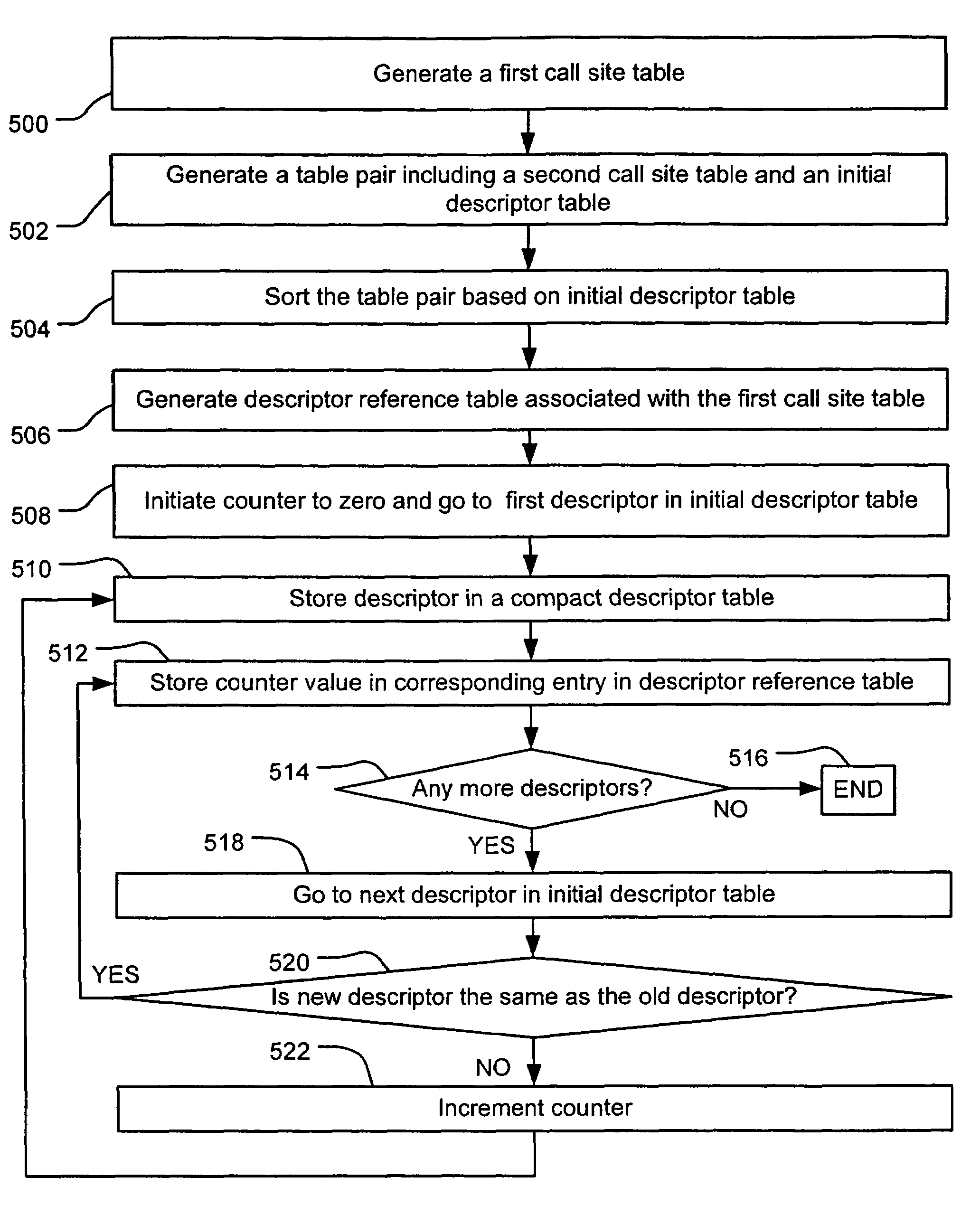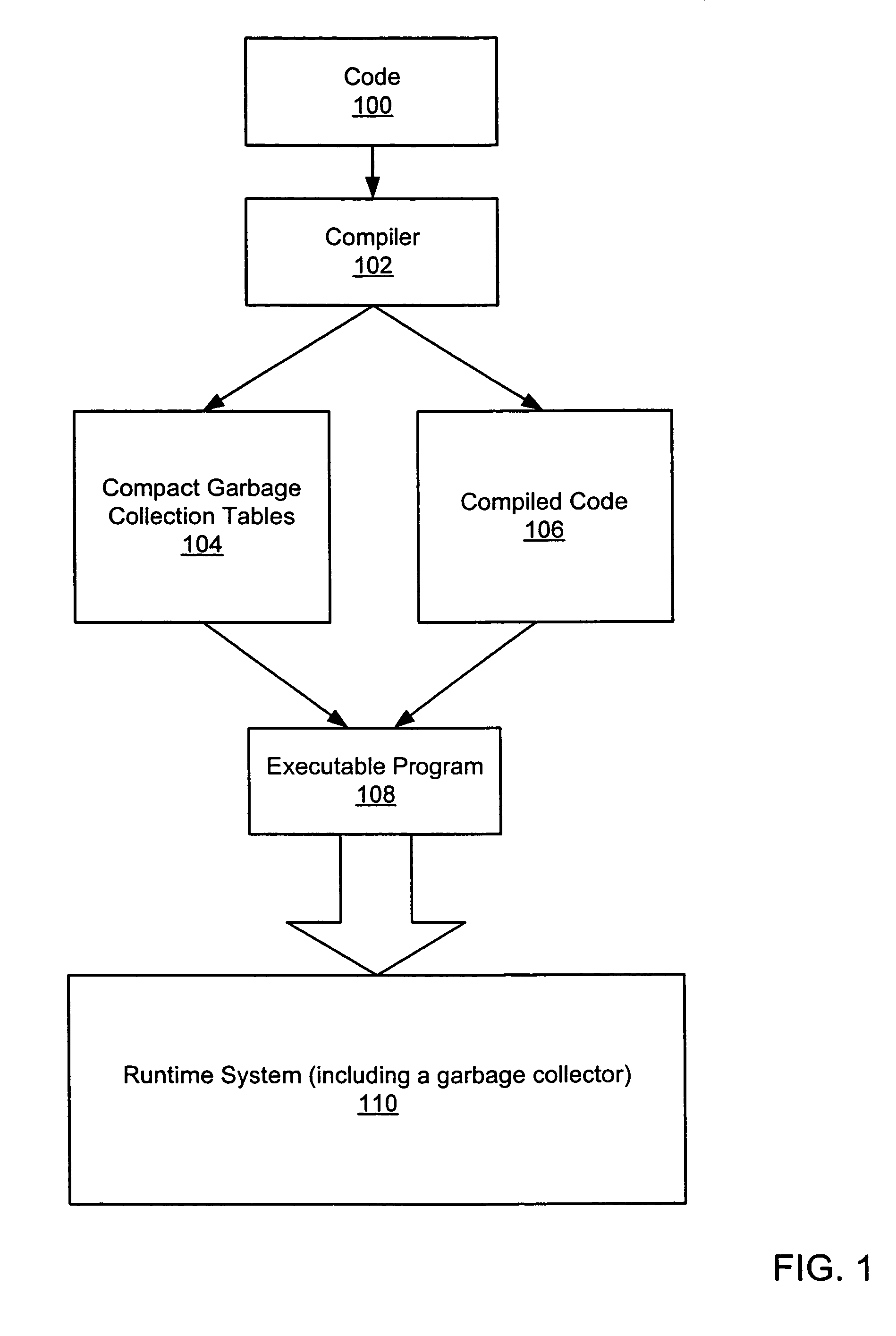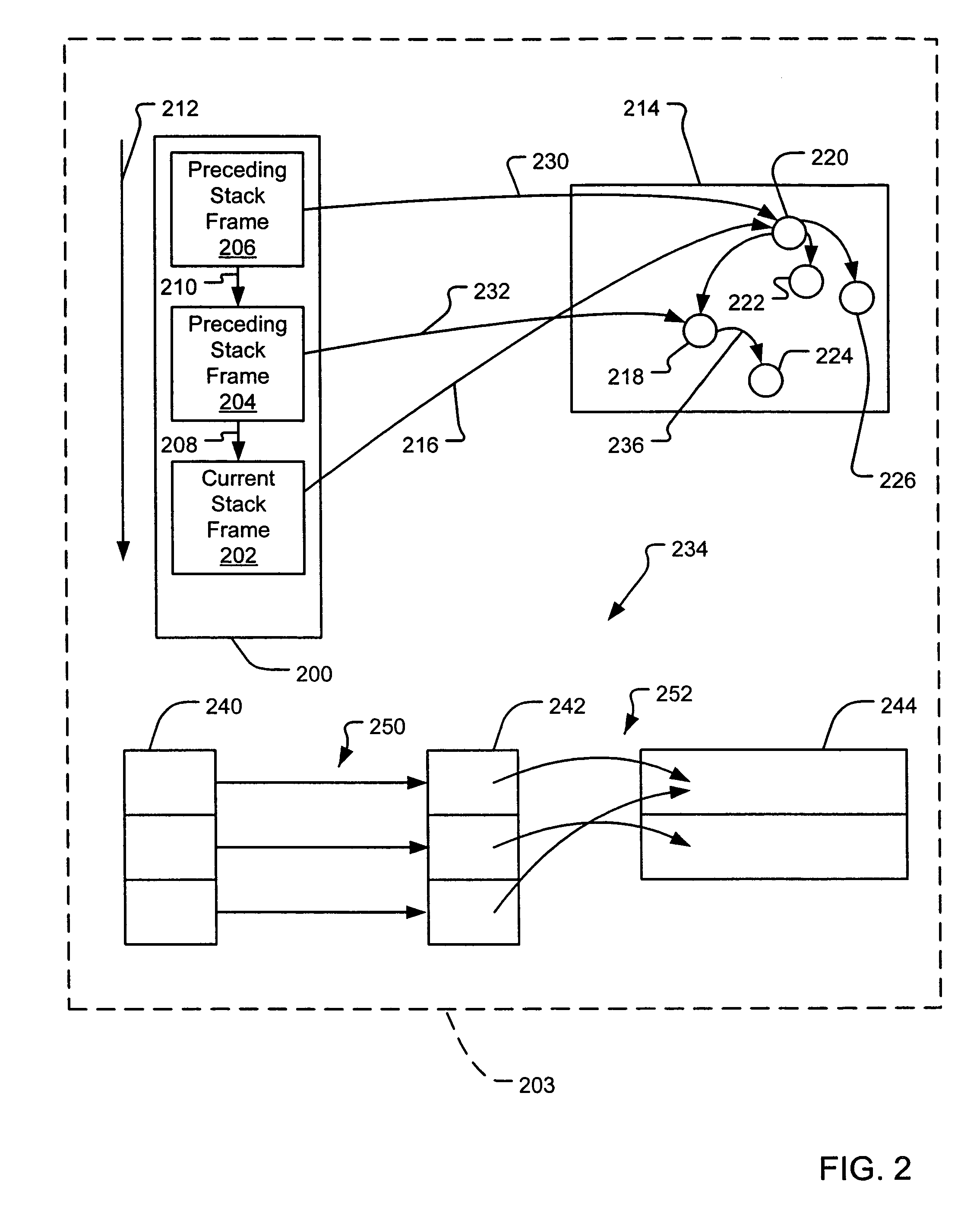Compact garbage collection tables
a garbage collection and table technology, applied in the field of memory management in the computer system, can solve the problems of large prior art garbage collection tables, large size of garbage collection tables, and limited data life in call stacks
- Summary
- Abstract
- Description
- Claims
- Application Information
AI Technical Summary
Benefits of technology
Problems solved by technology
Method used
Image
Examples
Embodiment Construction
[0022]A runtime system provides automatic storage management by periodically reclaiming unused heap memory through a process referred to as “garbage collection”. Garbage collection identifies heap memory that is in use and frees the remaining heap memory that is not in use. To identify memory that is in use, a garbage collector in a runtime system first locates all pointers that are either located in registers or stored in the call stack. These pointers are considered elements of a root set, from which garbage collection of the heap begins. All objects that the pointers reference are marked as “in use”. Thereafter, each “in use” object is scanned for pointers. This process repeats recursively until all relevant memory is scanned. In other words, the objects referenced by the pointers of each “in use” object are located and are also marked as “in use”, after which each new “in use” object is scanned for live pointers, and so on until all relevant memory that is “in use” has been iden...
PUM
 Login to View More
Login to View More Abstract
Description
Claims
Application Information
 Login to View More
Login to View More - R&D
- Intellectual Property
- Life Sciences
- Materials
- Tech Scout
- Unparalleled Data Quality
- Higher Quality Content
- 60% Fewer Hallucinations
Browse by: Latest US Patents, China's latest patents, Technical Efficacy Thesaurus, Application Domain, Technology Topic, Popular Technical Reports.
© 2025 PatSnap. All rights reserved.Legal|Privacy policy|Modern Slavery Act Transparency Statement|Sitemap|About US| Contact US: help@patsnap.com



